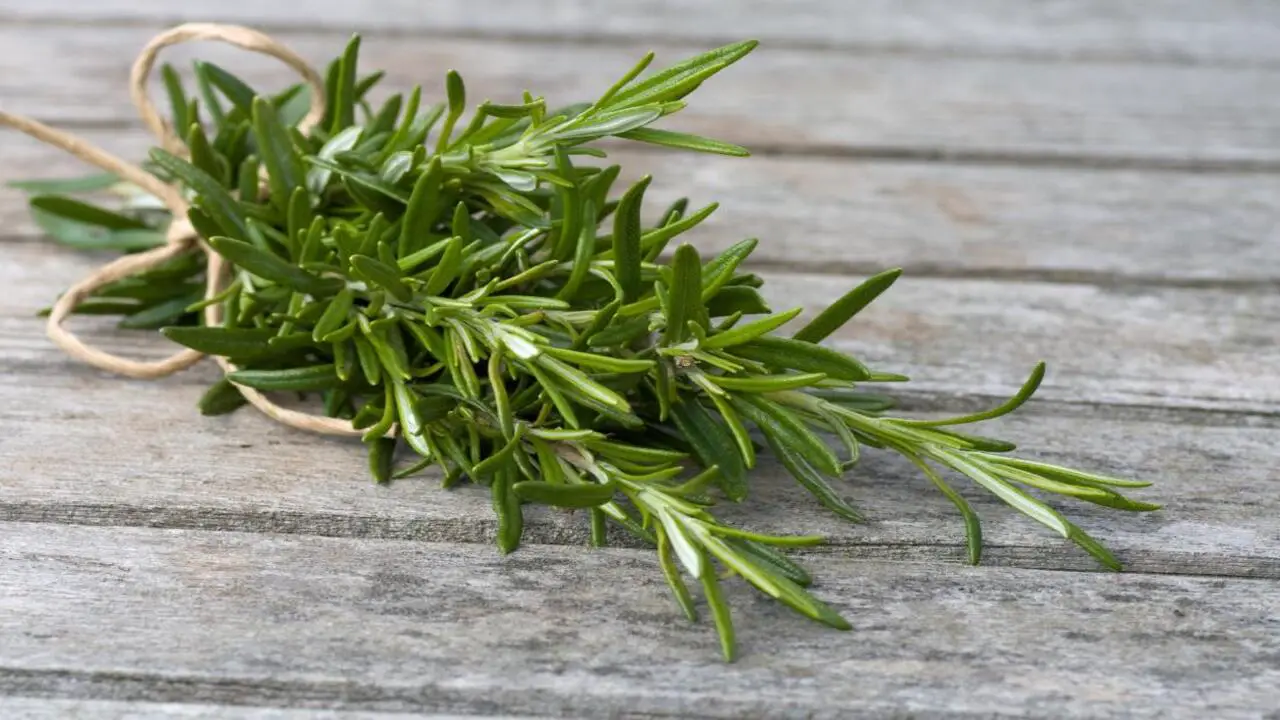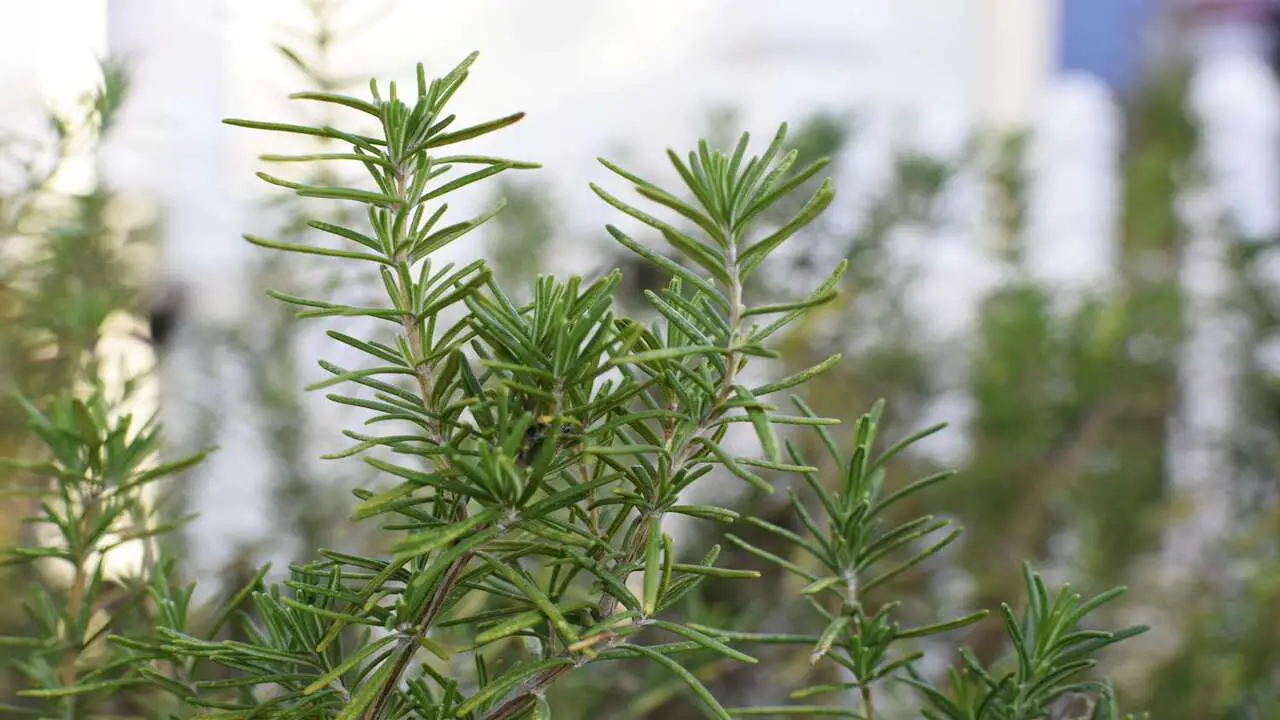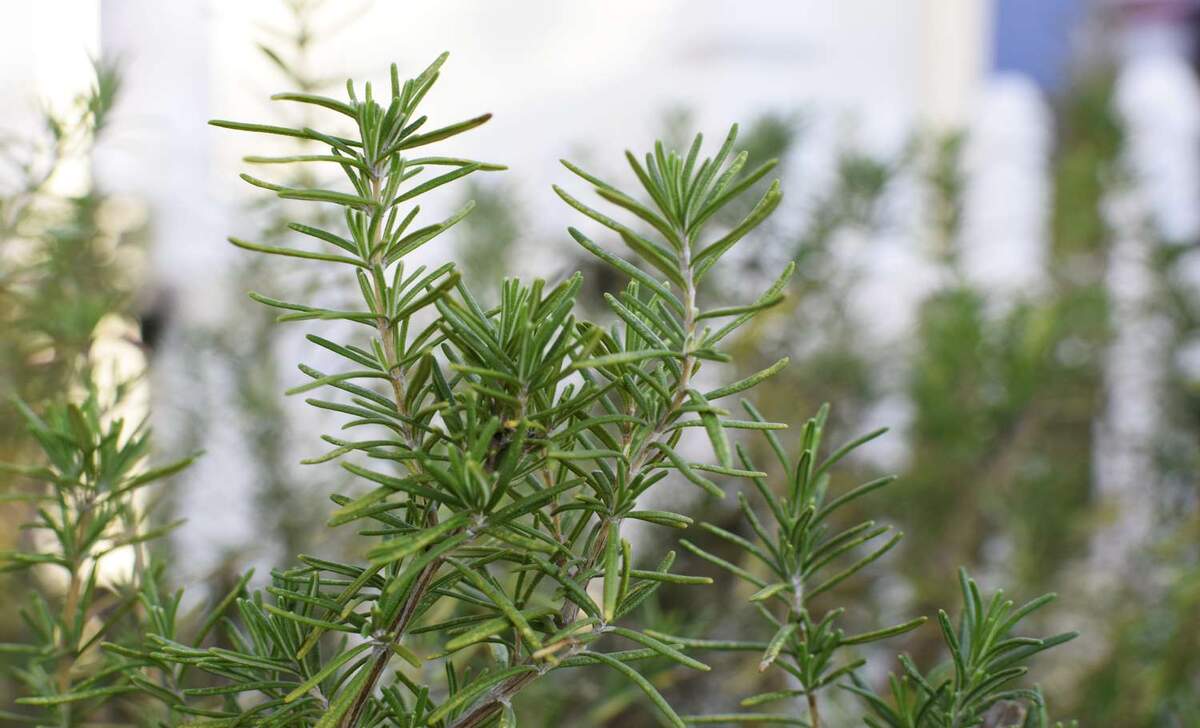Rosemary plants are a versatile and beloved addition to any garden or kitchen. With its distinct fragrance and robust flavor, this perennial herb has been handy for centuries in cooking, medicine, and even as a symbol of remembrance.
Native to the Mediterranean region, rosemary plants have gained popularity all over the world for their hardiness, low maintenance, and numerous health benefits. Here, we will delve deeper into the world of rosemary plants, exploring their various uses, care tips, and interesting facts.
Whether you are a seasoned gardener or a cooking enthusiast, there is much to be learned about this fragrant and flavorful herb. From its origins to its many varieties, rosemary plants have a rich and fascinating history that continues to intrigue and inspire to this day.

Rosemary Plants – Explain In Detail

Rosemary plants, scientifically known as Rosmarinus officinalis, are evergreen shrubs native to the Mediterranean region. These plants are popular for their aromatic leaves, which are commonly handy as culinary herbs.
Rosemary plants can grow up to 4-6 feet tall and have needle-like leaves that are dark green on the top and silver-gray on the bottom. They produce small, pale blue flowers in the spring and summer months.
Rosemary plants require well-drained soil and full sun exposure to thrive. They are quite drought-tolerant and do not require frequent watering. These plants are popular for their strong scent, which can help repel pests like mosquitoes and flies. People use rosemary not only for its culinary uses but also in herbal medicine and natural remedies.
Benefits Of Rosemary

Rosemary plants offer several benefits, both for culinary and health purposes. The aromatic leaves of rosemary plants have a distinct flavor that enhances the taste of various dishes, making them a popular herb in the culinary world.
Whether used in marinades, roasted meats, or infused in oils, rosemary adds a unique and savory element to any recipe. Additionally, rosemary plants are popular for their medicinal properties. Here are some of the advantages of rosemary:
- Culinary Uses: Rosemary is a popular herb used in cooking due to its distinct flavor and aroma. It can enhance the taste of various dishes, including roasted meats, vegetables, soups, and sauces.
- Antioxidant Properties: Rosemary is rich in antioxidants, such as rosmarinic acid and carnosic acid. These compounds help protect the body’s cells from damage caused by free radicals, which can contribute to chronic diseases and aging.
- Improved Digestion: Consuming rosemary can promote healthy digestion. It has been traditionally used to relieve indigestion, bloating, and stomach cramps.
- Enhanced Cognitive Function: Some studies suggest that rosemary may have cognitive benefits. Researchers have linked the aroma of rosemary to improved memory, concentration, and mental alertness.
Growing Rosemary Plants
Rosemary plants (Rosmarinus officinalis) are popular herbs known for their aromatic leaves and culinary uses. These plants are native to the Mediterranean region and are popular for their ability to thrive in warm and dry conditions.
Gardeners often grow rosemary plants for both ornamental and culinary purposes. The leaves of the rosemary plant have a distinct pine-like fragrance and are commonly used to flavor various dishes, such as roasted meats, soups, and stews. Here is some information on growing rosemary plants:
- Location: Rosemary plants thrive in sunny spots with well-drained soil. Choose a location with at least 6 hours of direct sunlight per day.
- Soil: Rosemary prefers slightly alkaline soil with a pH between 6 and 7. If your soil is acidic, you can add lime to raise the pH level.
- Planting: You can grow rosemary from seeds, cuttings, or young plants. If starting from seeds, sow them indoors 8-10 weeks before the last frost date. Transplant seedlings outdoors when the soil has warmed up. Space the plants about 2-3 feet apart.
- Watering: Rosemary plants are drought-tolerant once established. Water them deeply and infrequently, allowing the soil to dry between waterings.
Rosemary Plants Growing Needs

Rosemary plants have specific growing needs that are important to consider in order to ensure their health and vitality. Also, rosemary plants originate from Mediterranean regions and adapt to dry climates, so it is crucial to refrain from overwatering them.
Allow the soil to dry out between watering sessions to prevent root rot. Pruning is also vital for rosemary plants, as it promotes bushier growth and prevents them from becoming leggy. Regularly trimming the branches will not only keep the plant in a desirable shape but also enhance its overall health. Here are some key points regarding the growing requirements of rosemary plants:
- Sunlight: Rosemary plants thrive in full sunlight. They require at least 6 to 8 hours of direct sunlight each day. Choose a location in your garden or outdoor space that receives ample sunlight.
- Soil: These plants prefer well-draining soil that is slightly acidic with a pH range of 6 to 7.5. Amend heavy or clay soils with organic matter to improve drainage. Avoid waterlogged conditions, as rosemary plants are susceptible to root rot.
- Watering: Rosemary plants are drought-tolerant and prefer to dry out between watering. Water deeply but infrequently, allowing the top few inches of soil to dry out before watering again. Overwatering can lead to root rot, so be cautious not to saturate the soil.
Varieties To Grow
There are several varieties of rosemary plants that you can grow. In your garden or containers. One popular variety is the Tuscan Blue rosemary, known for its strong aroma and vibrant blue flowers.
Another variety is the Prostrate rosemary, which has a trailing growth habit and is perfect for ground cover or cascading over walls. The Arp rosemary is popular for its cold hardiness, making it a great choice for gardeners in cooler climates. Here are some popular ones:
- Tuscan Blue: This variety is known for its strong flavor and robust growth. It has dark green leaves and pale blue flowers.
- Arp: Arp rosemary is a cold-hardy variety that can withstand lower temperatures than other types. It has gray-green leaves and a mild flavor.
- Prostrate: This variety has a trailing habit, making it perfect for cascading over walls or in hanging baskets. It has small leaves and a strong aroma.
- Spice Island: Spice Island rosemary is a compact variety that is well-suited for container gardening. It has narrow leaves and a strong flavor.
- Barbecue: As the name suggests, this variety is often used for grilling and barbecuing. It has thick leaves and a robust flavor.
Ideal Growing Locations
Rosemary plants thrive in areas with a Mediterranean climate, characterized by mild, wet winters and hot, dry summers. They prefer well-drained soil with a pH level between 6.0 and 7.0. Rosemary plants require full sun exposure for at least 6 hours a day. They can be grown both in containers and in garden beds.
Rosemary typically suits hardiness zones 7-10, but you can also grow it in colder regions with proper protection and care. Overall, regions with a similar climate to their native Mediterranean habitat provide the ideal growing conditions for rosemary plants.
Keeping Rosemary Plants Healthy

To keep your rosemary plants healthy, it is important to provide them with the right growing conditions. Rosemary plants thrive in sunny locations with well-draining soil. Make sure to plant them in a spot where they will receive at least six to eight hours of direct sunlight each day. This will encourage bushier growth and prevent the plant from becoming leggy. With proper care, here are some tips:
- Location: Rosemary plants thrive in full sunlight, so choose a spot in your garden or balcony that receives at least 6-8 hours of direct sunlight daily.
- Soil: Rosemary prefers well-draining soil with a pH level of 6-7. Make sure you do not compact the soil too much, as it can lead to root rot. You can improve drainage by adding organic matter like compost or sand to the soil.
- Watering: Rosemary plants prefer slightly dry conditions, so avoid overwatering. Allow the top inch of soil to dry out before watering thoroughly. It’s better to underwater than overwater, as excessive moisture can cause root problems.
- Pruning: Regular pruning helps maintain the shape and health of your rosemary plants. Prune after flowering or in early spring to encourage new growth. Remove any dead or diseased branches, and trim back about one-third
Harmful Insects
To keep your rosemary plants healthy, it is important to provide them with the right growing conditions. Rosemary plants thrive in well-draining soil that is slightly sandy and alkaline in nature. They require at least six to eight hours of direct sunlight daily, so choose a spot in your garden that receives ample sunlight.
Regular watering is necessary, but make sure not to overwater the plants, as they are susceptible to root rot. Pruning the rosemary plants regularly will help promote bushier growth and prevent them from becoming leggy. Here are some tips:
- Location: Rosemary plants thrive in full sunlight, so choose a spot in your garden or balcony that receives at least 6-8 hours of direct sunlight daily.
- Soil: Rosemary prefers well-draining soil with a pH level of 6-7. Make sure the soil is not too compacted, as it can lead to root rot. You can improve drainage by adding organic matter like compost or sand to the soil.
- Watering: Rosemary plants prefer slightly dry conditions, so avoid overwatering. Allow the top inch of soil to dry out before watering thoroughly. It’s better to underwater than overwater, as excessive moisture can cause root problems.
- Pruning: Regular pruning helps maintain the shape and health of your rosemary plants. Prune after flowering or in early spring to encourage new growth.
Fungal Diseases

Fungal diseases in rosemary plants can be quite common and can affect various parts of the plant, including the leaves, stems, and roots. One common fungal disease that affects rosemary is powdery mildew, which appears as a white, powdery substance on the leaves.
Another common fungal disease is root rot, which occurs when the roots are infected by fungi, leading to wilting and decay of the plant. To prevent fungal diseases in rosemary plants, it is important to provide proper air circulation, avoid overwatering, and maintain good hygiene by removing any infected plant material.
Fungicides may also be handy as a preventive measure or to treat existing fungal infections. If you suspect your rosemary plant has a fungal disease, it is advisable to consult with a local gardening expert or plant pathologist for appropriate diagnosis and treatment options.
Harvesting Rosemary
Harvesting rosemary is a fairly simple process. This will allow the plant to continue growing and producing more leaves. It is best to harvest rosemary in the morning, as this is when the essential oils in the leaves are at their peak.
The harvested sprigs can be handy fresh or dried for later use in culinary dishes, aromatherapy, or homemade herbal remedies. Remember always to prune your rosemary plants regularly to keep them bushy and healthy. Here are some key points to keep in mind:
- Timing: Rosemary can be harvested throughout the year, but it is best to do so in the morning when the essential oils are most potent.
- Cutting: Use sharp pruning shears or scissors to cut the rosemary stems. Start by selecting healthy, mature branches from the plant.
- Pruning: To encourage bushier growth, it’s a good idea to prune rosemary regularly. Make sure to prune no more than one-third of the plant at a time.
- Technique: When harvesting, cut the stem just above a leaf node or set of leaves. This will encourage new growth from that point.
- Storage: To preserve the flavor and aroma of rosemary, it is best to use it fresh. However, if you have more than you can use immediately, you can dry the leaves by hanging them upside down in a well-ventilated area.
Storing And Preserving Rosemary

To store and preserve rosemary plants, it is important to follow a few key steps. Firstly, it is best to harvest rosemary in the morning when the essential oils are at their peak. Cut the branches just above a leaf node to encourage new growth.
Once harvested, gently rinse the branches to remove any dirt or debris. Next, bundle the branches together and secure them with a string or rubber band. Hang the bundles upside down in a well-ventilated area away from direct sunlight, and follow these guidelines:
- Harvesting: Rosemary can be harvested throughout the year. It’s best to pick the leaves in the morning when the aromatic oils are at their peak.
- Drying: Tie small bundles of rosemary sprigs together with a string and hang them upside down in a cool, dry place. This method allows the leaves to dry naturally while preserving their flavor. Alternatively, you can also dry the leaves on a baking sheet in a low-temperature oven.
- Freezing: Another option is to freeze rosemary. Strip the leaves from the stems and place them in an airtight container or freezer bag. You can use the whole sprigs or chop the leaves before freezing. This method helps retain the herb’s flavor and aroma.
- Storing: If you prefer to store fresh rosemary, place the sprigs in a glass of water, similar to a bouquet, and cover them loosely with a plastic bag.
How To Propagate Rosemary Plants
To propagate rosemary plants, you can take stem cuttings from a healthy and mature plant. Choose a non-flowering stem and make a clean cut just below a node. Remove the lower leaves, leaving only a few at the top. Dip the cut end in a rooting hormone to encourage root development. Plant the cutting in a well-draining potting mix and keep it moist but not waterlogged. You can follow these steps:
- Take Cuttings: Select a healthy, non-flowering stem from an established rosemary plant. Make a clean cut just below a node (where the leaves emerge) using sharp, clean pruning shears.
- Remove Lower Leaves: Strip off the lower leaves from the bottom two-thirds of the cutting. This will expose the nodes where the roots will form.
- Dip in Rooting Hormone (Optional): While not necessary, dipping the cut end of the rosemary in a rooting hormone powder can help stimulate root growth.
- Plant In A Well-Draining Medium: Fill a small pot or container with a well-draining potting mix. Make a hole in the soil and carefully insert the rosemary cutting, ensuring that the nodes are covered.
- Provide The Right Conditions: Place the potted cutting in a warm and bright location but away from direct sunlight. Maintain a consistent level of moisture in the soil,
Repotting Rosemary Plants

Repotting rosemary plants is an important step in their care and maintenance. Using a well-draining soil mixture that is specifically formulated for herbs will help prevent waterlogged roots and promote healthy growth.
Gently remove the rosemary plant from its current pot, being careful not to damage the roots, and place it into the new pot, filling in any gaps with fresh soil. After repotting, it is crucial to water the plant thoroughly and provide it with adequate sunlight to help it adjust to its new environment. Here is some information to guide you through the process:
- Choose The Right Time: The best time to repot rosemary plants is in the early spring, just before new growth begins.
- Select A Suitable Pot: Choose a pot that is slightly larger than the current one, as rosemary prefers more compact roots. Ensure that the pot has drainage holes to prevent waterlogged soil.
- Prepare The New Pot: Fill the new pot with a well-draining soil mix, such as a combination of potting soil, sand, and perlite. This will ensure good drainage and prevent root rot.
- Gently Remove The Plant: Carefully remove the rosemary plant from its current pot by holding the base of the plant and gently pulling it out. Be cautious not to damage the roots.
- Inspect And Prune The Roots: Examine the roots for any signs of damage or overcrowding.
Ways To Use Rosemary Plants
Rosemary plants can be handy in various ways to enhance both the flavor of your food and the ambiance of your home. Rosemary plants are not only a delightful addition to any garden but also serve as a versatile herb that can enhance the flavor of various dishes. Known for its distinct aroma and earthy flavor, rosemary is commonly used in Mediterranean cuisine, particularly with roasted meats and vegetables; here are some ways to use rosemary plants:
- Use fresh rosemary leaves as a flavorful addition to various dishes, such as roasted vegetables, grilled meats, or pasta sauces.
- Infuse olive oil with rosemary by placing a few sprigs in a bottle of olive oil and letting it sit for a few days. This rosemary-infused oil can be used for cooking or as a salad dressing.
- Make rosemary tea by steeping fresh or dried rosemary leaves in hot water for a few minutes. This herbal tea is known for its potential health benefits, including improved digestion and memory.
- Create a fragrant rosemary sachet by placing dried rosemary leaves in a small fabric bag. This can be placed in drawers or closets to add a pleasant aroma.
- Use rosemary branches as skewers for grilling. The woody stems add a subtle flavor to the food while keeping it secure.
- Make homemade rosemary-infused vinegar by placing fresh rosemary sprigs in a bottle of vinegar and allowing it to steep
Conclusion
rosemary plants are a wonderful addition to any garden or household. With their fragrant leaves, beautiful flowers, and numerous health benefits, they are a versatile and valuable herb.
Not only do rosemary plants add a touch of beauty to any space, but they also have a variety of practical uses. The aromatic leaves of the rosemary plant can be harvested and used in cooking to add a delicious and distinctive flavor to a wide range of dishes.
Whether used in culinary creations, as a natural remedy or simply enjoyed for its pleasant scent, rosemary plants are a valuable and versatile addition to any green space or home. Whether used in cooking, aromatherapy, or for their medicinal properties, rosemary plants are a must-have for any herb enthusiast.
With proper care and attention, these plants can thrive and provide endless enjoyment and usefulness. Consider adding a rosemary plant to your collection and experience all that this remarkable herb has to offer.
FAQs
1.What Are The Ideal Growing Conditions For Rosemary Plants?
Ans: Rosemary plants thrive in warm and sunny environments, making them well-suited for Mediterranean climates. They require at least six to eight hours of direct sunlight per day to grow vigorously. In terms of soil, rosemary plants prefer well-draining soil with a pH level between 6 and 7. They can tolerate slightly alkaline conditions but struggle in heavy clay soils that retain too much water. To ensure proper drainage, it is recommended to amend the soil with organic matter like compost or sand.
2.How Often Should Rosemary Plants Be Watered?
Ans: Rosemary plants are known for their ability to thrive in dry conditions, making them relatively low-maintenance when it comes to watering. It is important not to overwater rosemary as it prefers well-drained soil. In general, rosemary plants should be watered deeply but infrequently. This means allowing the soil to dry out between waterings. A good rule of thumb is to water rosemary when the top inch of the soil feels dry to the touch. It is better to underwater than overwater rosemary, as excessive moisture can lead to root rot and other problems.
3.What Are The Common Pests And Diseases That Affect Rosemary Plants?
Ans: Rosemary plants are generally hardy and resistant to many pests and diseases. However, there are a few common issues that can affect their health and vigor. One of the most common pests that target rosemary plants is the spider mite. These tiny arachnids suck the sap from the leaves, causing them to turn yellow and eventually die. Another common pest is the whitefly, which feeds on the undersides of the leaves and leaves behind sticky honeydew.
4.Can Rosemary Plants Be Grown Indoors?
Ans: Yes, rosemary plants can indeed be grown indoors. While they are native to the Mediterranean region and thrive in warm and sunny climates, they can also adapt well to indoor environments with proper care. Indoor rosemary plants require bright sunlight for at least six hours a day, so placing them near a south-facing window or using grow lights can help provide the necessary light.
5.What Are The Different Varieties Of Rosemary Plants Available?
Ans: Rosemary plants are known for their aromatic leaves and beautiful blue flowers. They are a popular choice among gardeners due to their versatility and ability to thrive in various climates. There are several different varieties of rosemary plants available, each with its unique characteristics. The most common variety is Rosmarinus officinalis, which is known for its strong flavor and fragrance.

